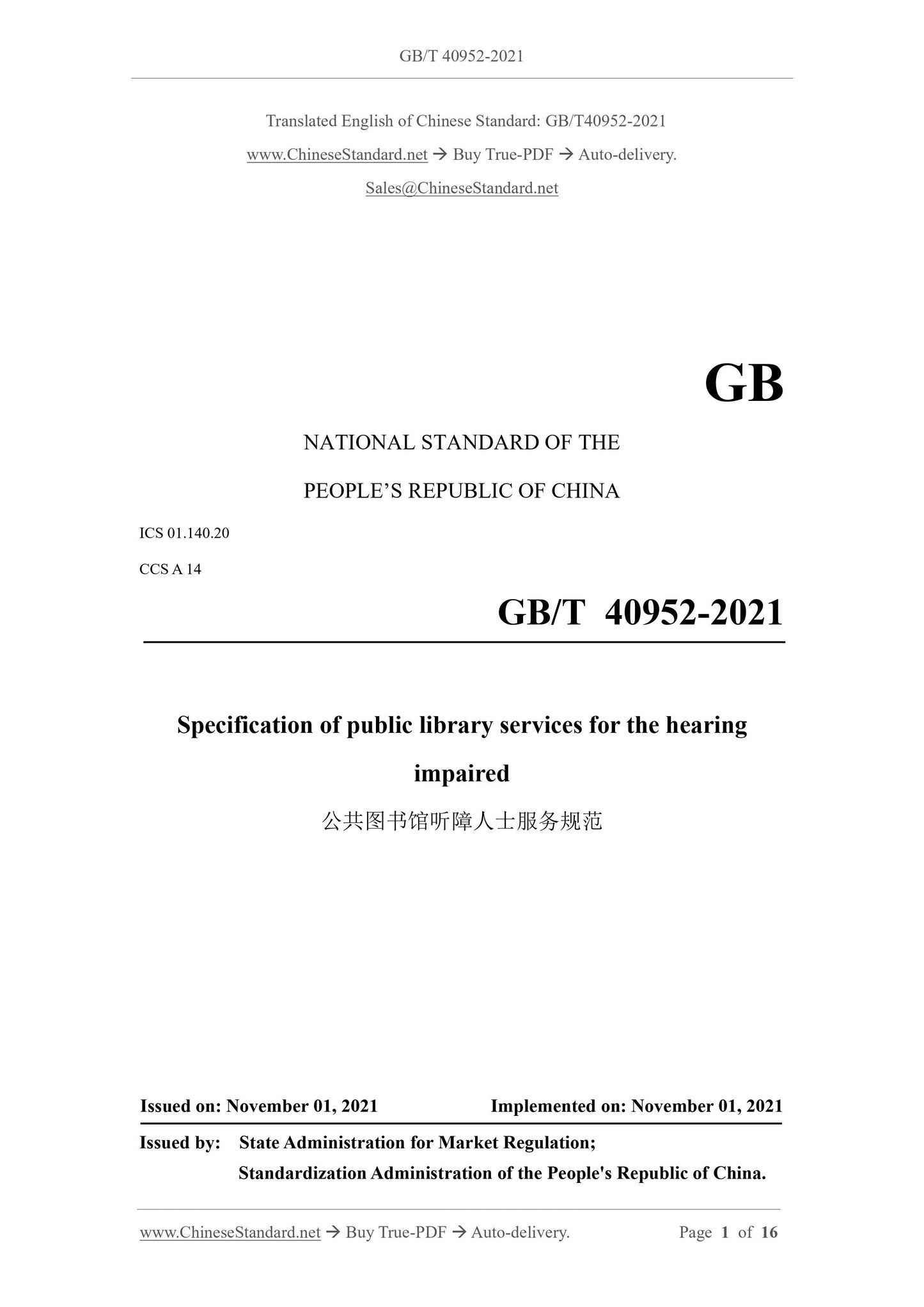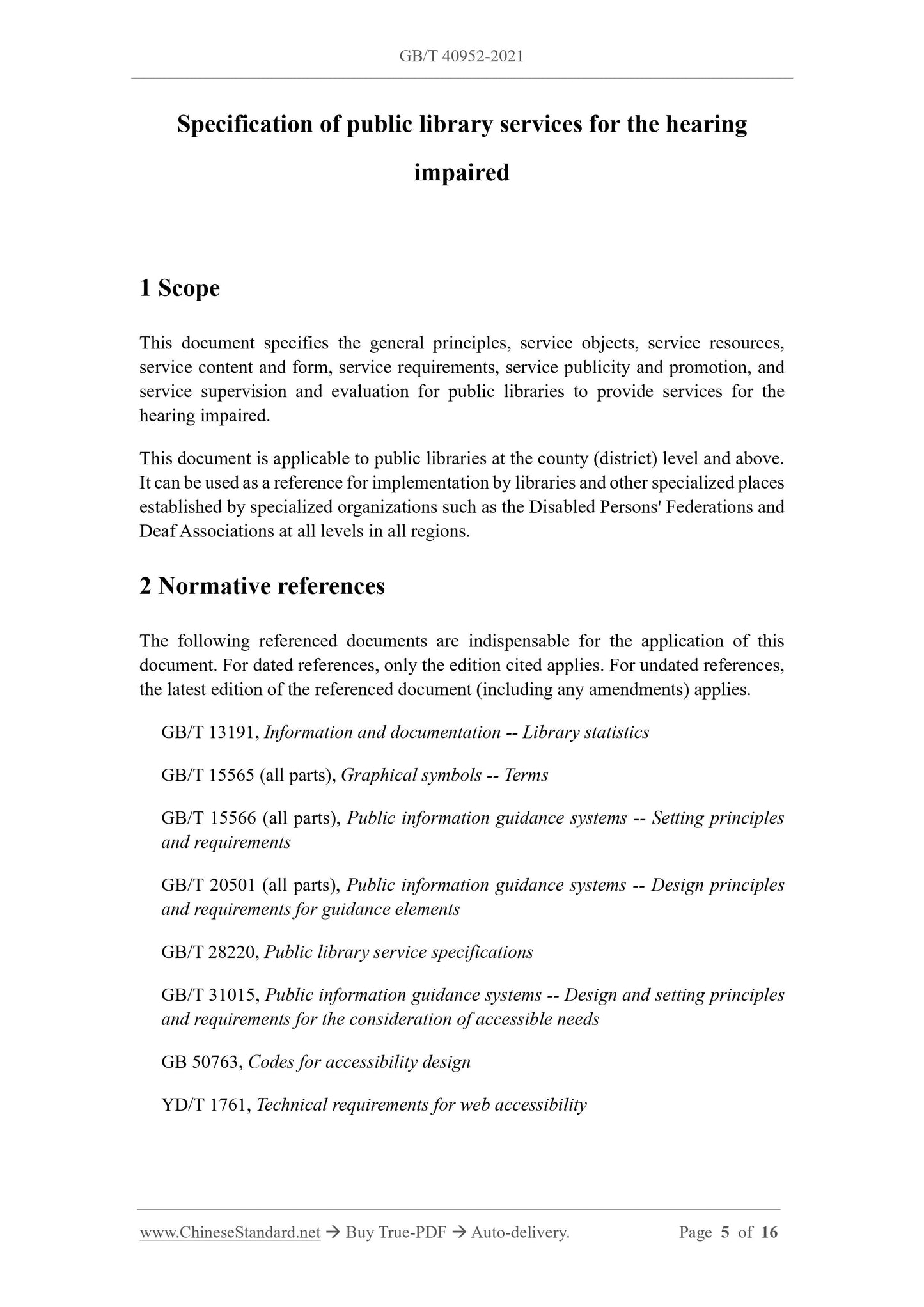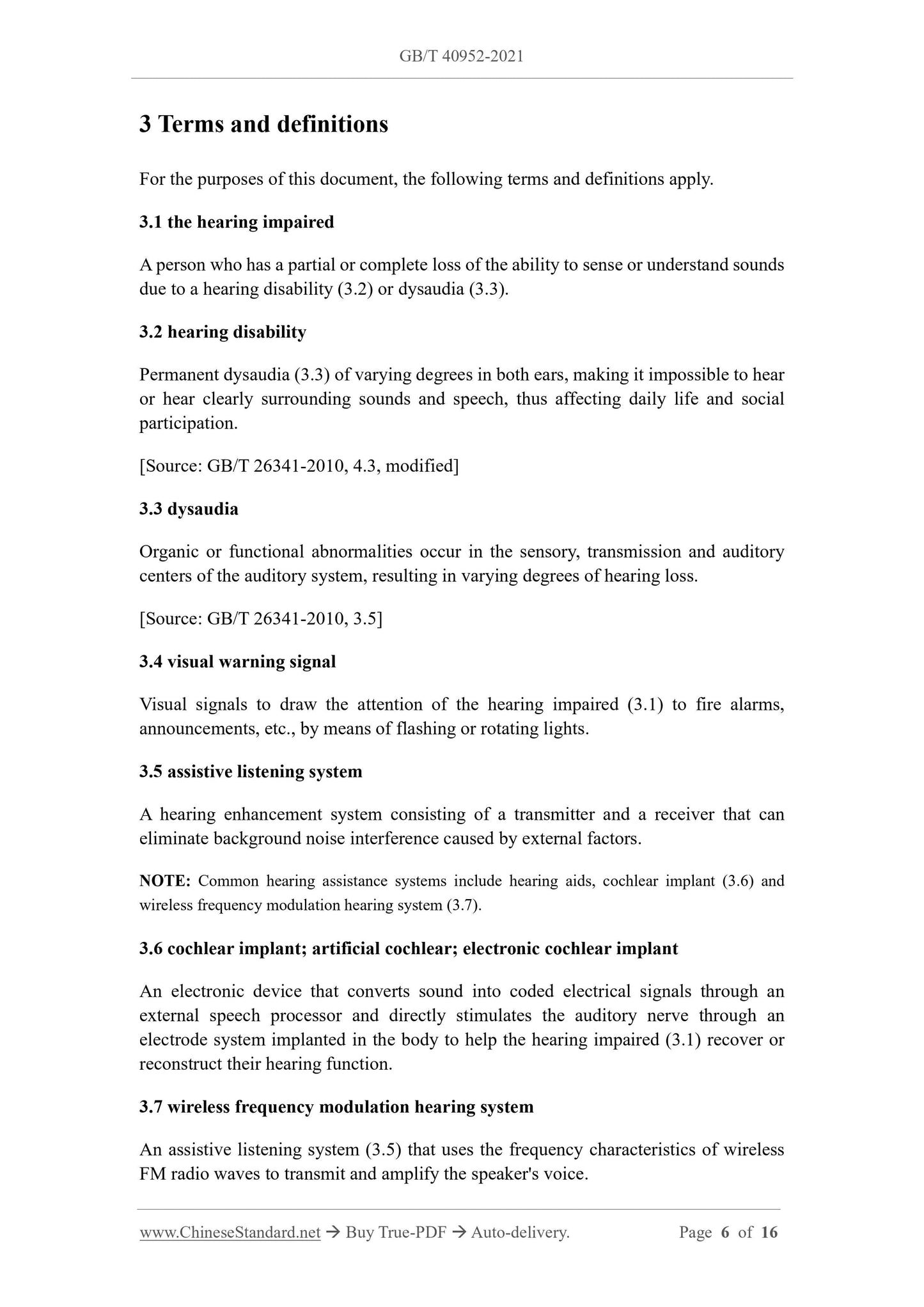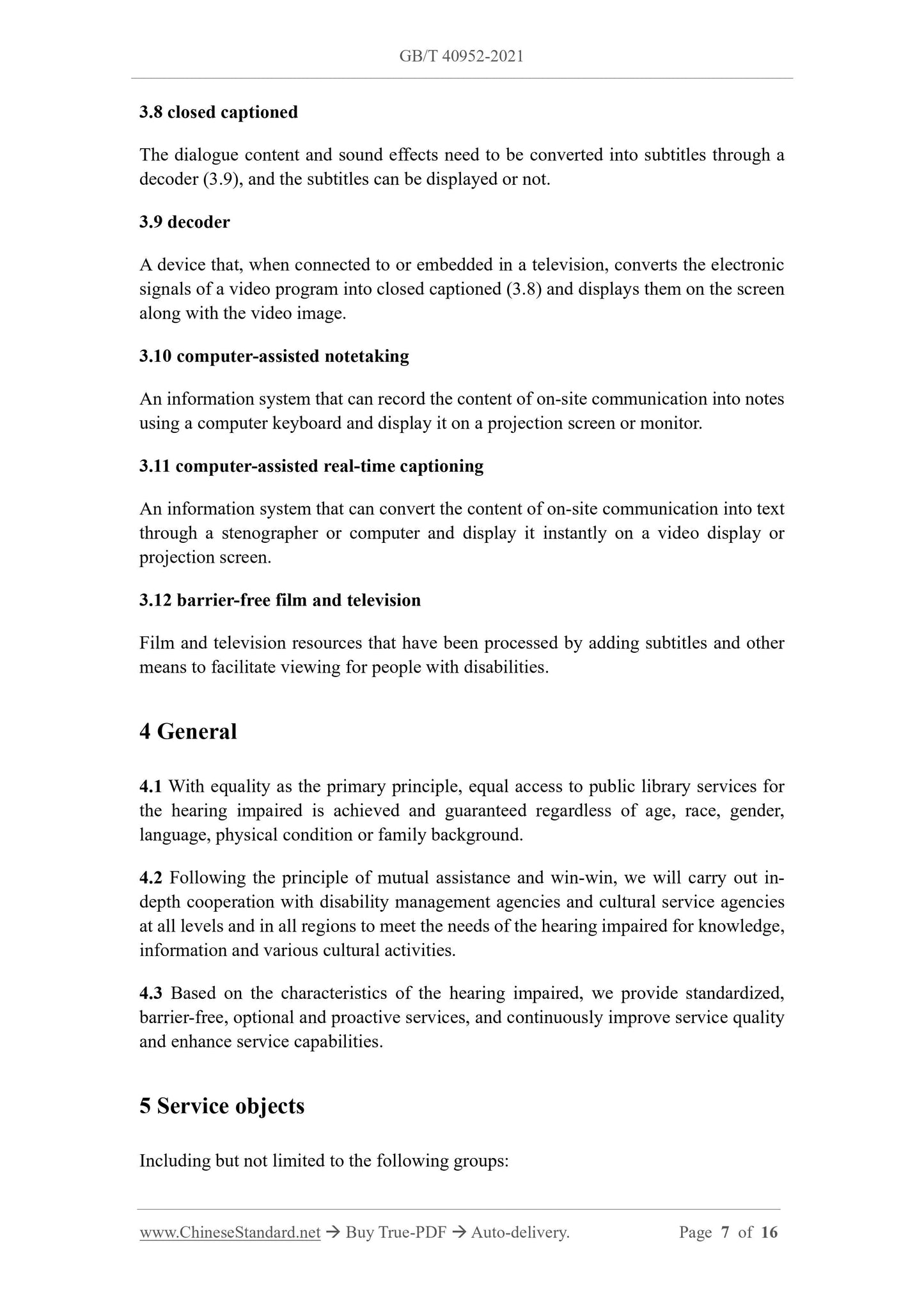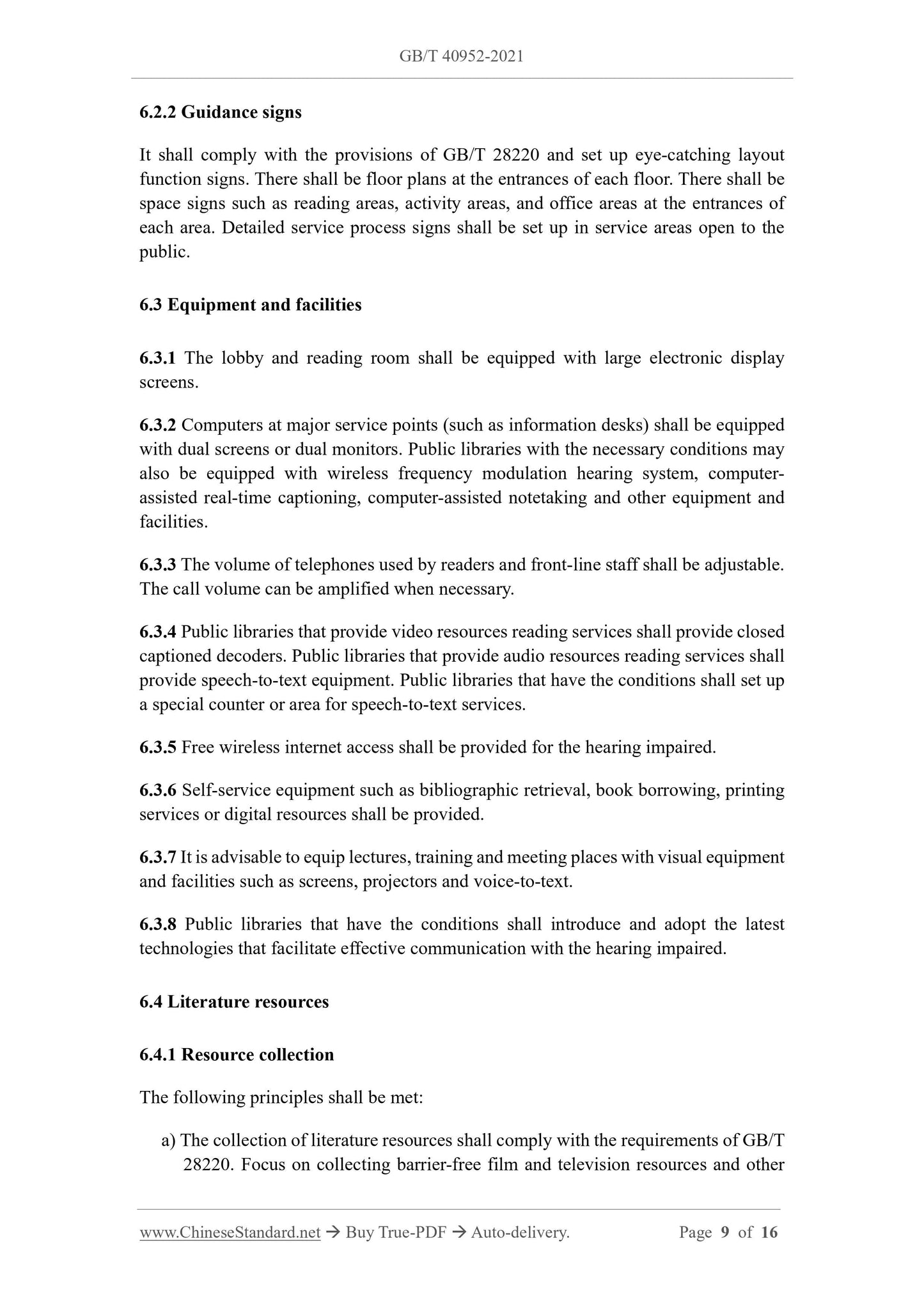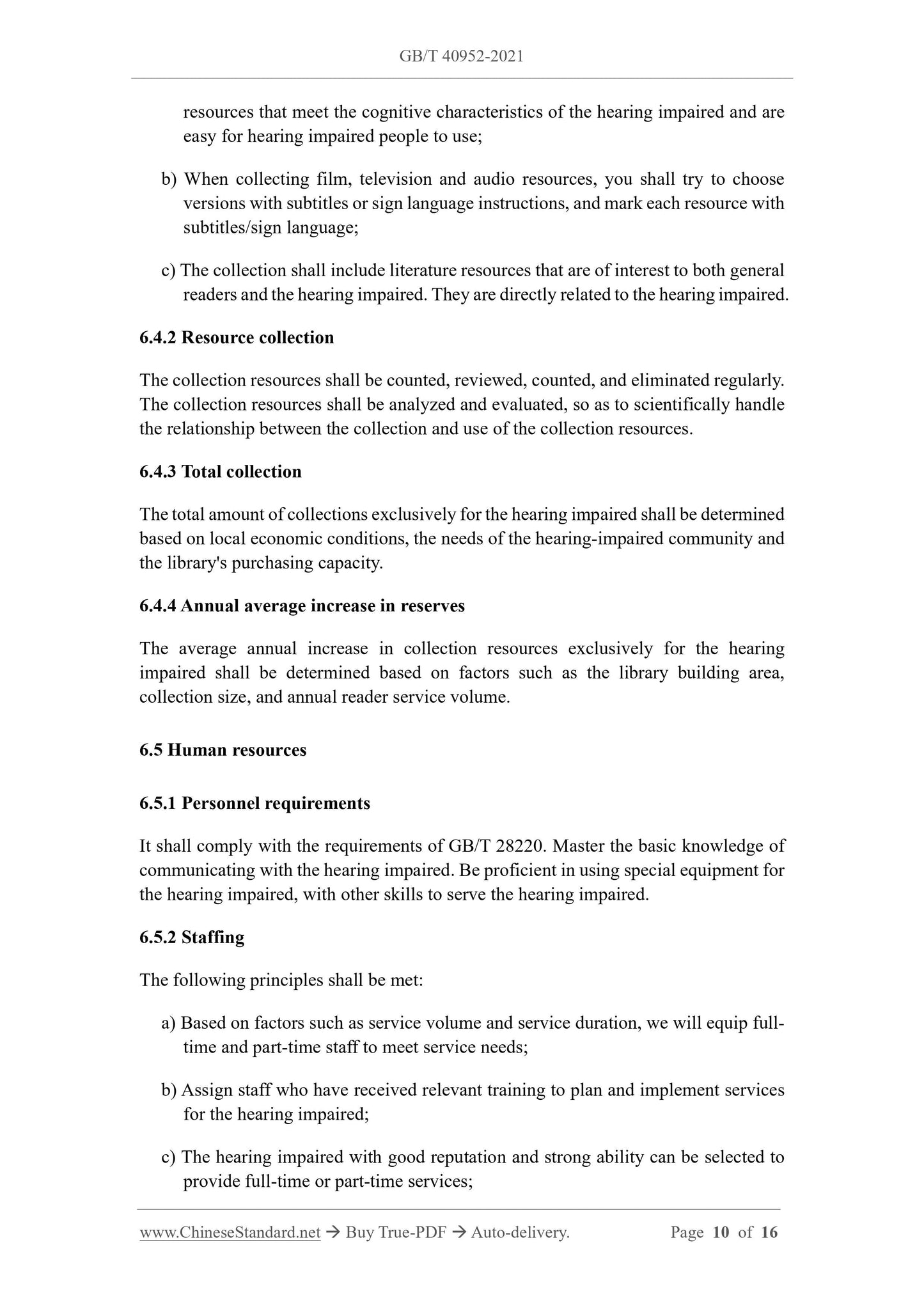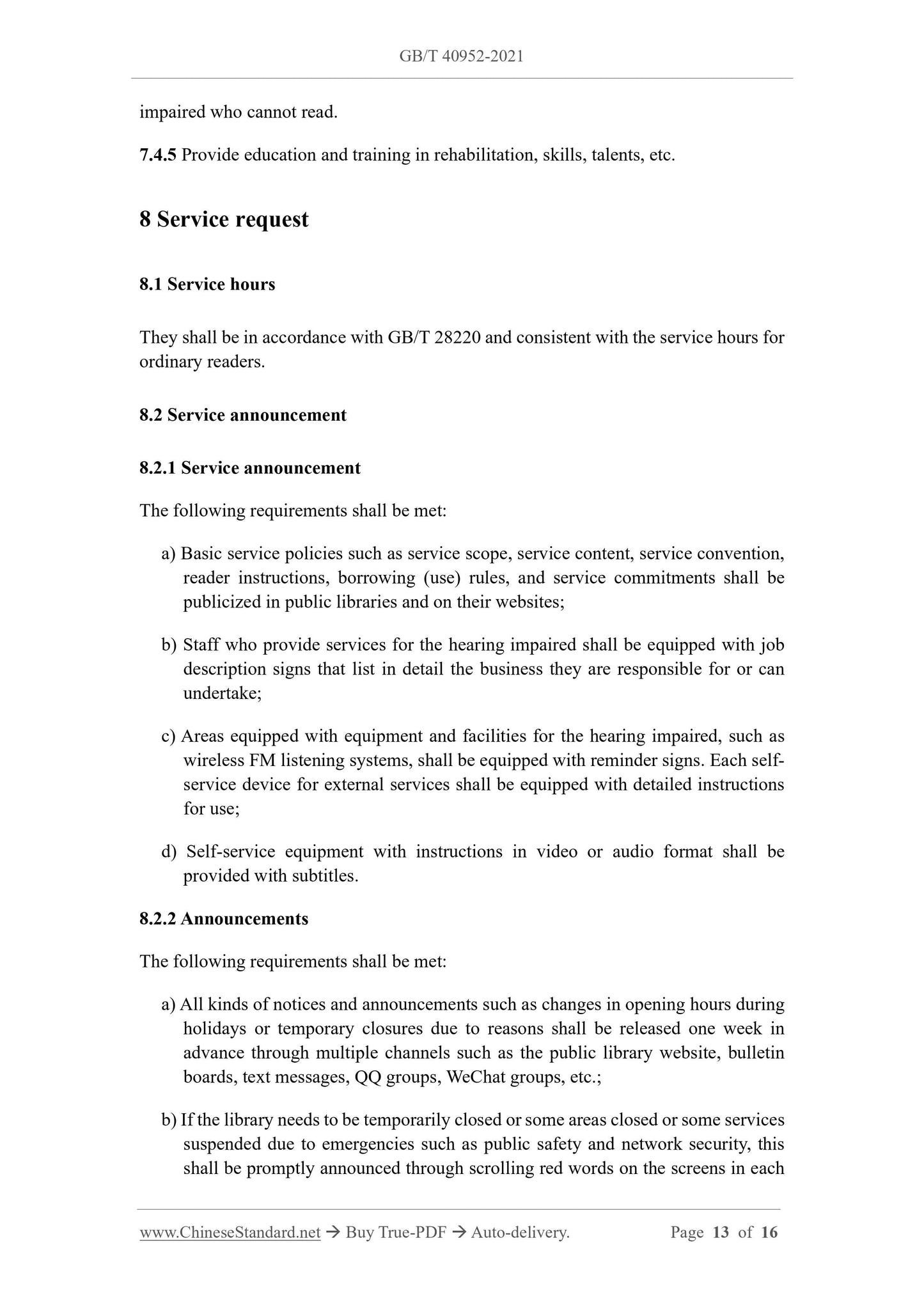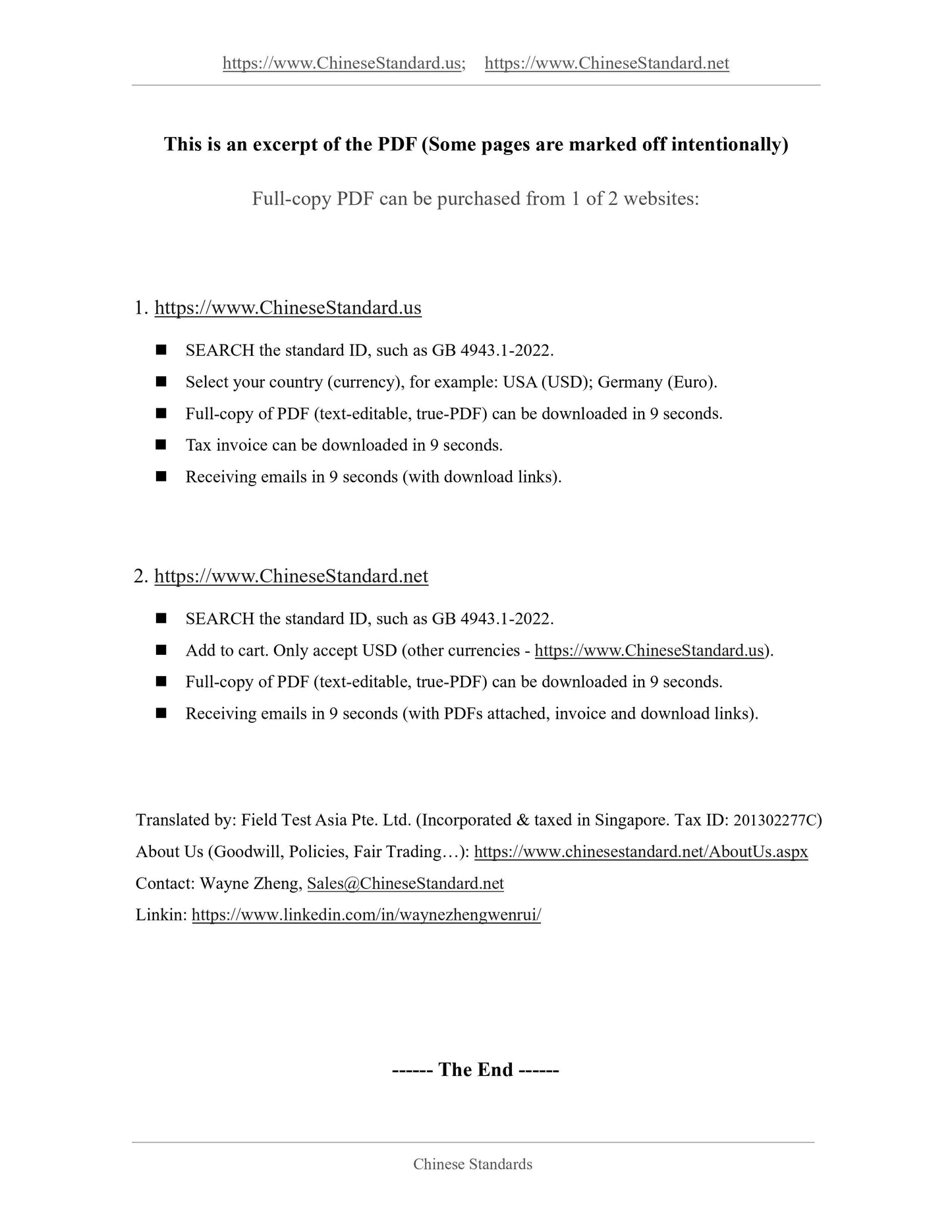1
/
of
10
www.ChineseStandard.us -- Field Test Asia Pte. Ltd.
GB/T 40952-2021 English PDF (GB/T40952-2021)
GB/T 40952-2021 English PDF (GB/T40952-2021)
Regular price
$200.00
Regular price
Sale price
$200.00
Unit price
/
per
Shipping calculated at checkout.
Couldn't load pickup availability
GB/T 40952-2021: Specification of public library services for the hearing impaired
Delivery: 9 seconds. Download (and Email) true-PDF + Invoice.Get Quotation: Click GB/T 40952-2021 (Self-service in 1-minute)
Newer / historical versions: GB/T 40952-2021
Preview True-PDF
Scope
This document specifies the general principles, service objects, service resources,service content and form, service requirements, service publicity and promotion, and
service supervision and evaluation for public libraries to provide services for the
hearing impaired.
This document is applicable to public libraries at the county (district) level and above.
It can be used as a reference for implementation by libraries and other specialized places
established by specialized organizations such as the Disabled Persons' Federations and
Deaf Associations at all levels in all regions.
Basic Data
| Standard ID | GB/T 40952-2021 (GB/T40952-2021) |
| Description (Translated English) | Specification of public library services for the hearing impaired |
| Sector / Industry | National Standard (Recommended) |
| Classification of Chinese Standard | A14 |
| Word Count Estimation | 14,135 |
| Issuing agency(ies) | State Administration for Market Regulation, China National Standardization Administration |
Share
